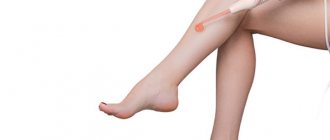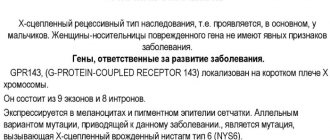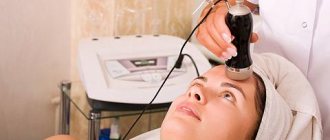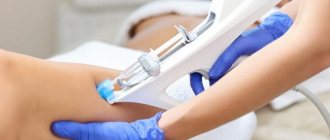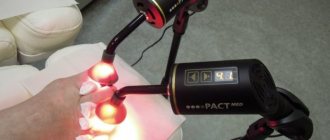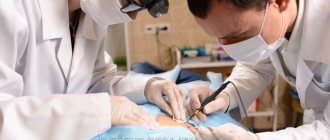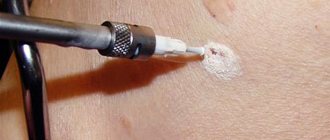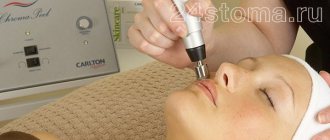Ingrown nail. Problem
toenails
grow unhindered and painlessly throughout their lives. Troubles arise when the plate, for a number of reasons, rests on the periungual fold and injures it. In most cases, this occurs on the big toe. It has a large nail and large soft tissue ridges.
When the nail begins to grow laterally and grows into the skin ridges, it is considered ingrown. It is important to begin treating this pathology as soon as possible to avoid complications.
Ingrown toenails can occur for a variety of reasons. This is most often observed due to wearing tight shoes. Often this pathology manifests itself due to flat feet or fungal infection. In some cases, an ingrown toenail can occur due to injury or an improperly performed pedicure. But in any case, you need to think about the treatment of such a pathology. Currently, this occurs in several main ways.
So, the most common treatment for ingrown toenails is surgery. Here the complete removal of the nail plate occurs. Parts of tissue that have been deformed due to an ingrown toenail are also removed. The operation is performed under anesthetics, they are administered locally. In order to provide free access to the affected nail, the soft tissue must be cut. Then, after the plate is completely removed, sutures are placed. They are removed after three days. It is important that the patient spends the entire postoperative period at home and takes analgesics. He can begin his work only after one month, provided that the wound heals quickly.
Ingrown toenails are also treated using radio waves. This method is used in many clinics in Europe and Russia. During its use, the patient only removes the ingrown part of the nail, while the soft tissues located nearby are not injured. It is important to note that this method of treatment eliminates the occurrence of relapse. Whereas with surgical intervention it is possible. The advantage of this treatment is that it is almost painless.
The procedure itself takes no more than 15 minutes. Radio wave treatment can be used at any stage of the disease. The operation in this case is performed with anesthetics, but they are applied only to the nail. During it, the nail plate and growth zone are subjected to special treatment with radio waves. During this process, excess soft tissue and parts of the nail are removed. In this case, after the operation there is no need to apply stitches, only bandaging is done. The patient then needs to change it on a regular basis and ensure that it does not get wet.
Ingrown toenails are often treated with plates. Thus, when using them, it is possible to correct the deformation of the nail plate and eliminate the inflammatory process. Typically, such plates are made from a leaf spring and covered with fiberglass. Glue the plates across the nail. They lift the nail so that it begins to grow correctly. They need to be used for several months.
Quite often, laser techniques are used to treat ingrown toenails. It is modern and is used in many medical centers and clinics. Experts say that this technique is no less effective than any other, and has several undeniable advantages. First of all, it does not involve making deep cuts. Secondly, it is absolutely bloodless. Thirdly, it is painless. Fourthly, during the procedure there is minimal trauma to the tissue and nail. Fifthly, the recovery period is short, it is only a few days.
During surgery using a laser, the nail plate is preserved almost completely, only its lateral ingrown parts are removed. The operation goes very quickly. It takes no more than 10 minutes. It is distinguished by aesthetics and not a high price. This technique ensures that the patient does not experience a relapse after surgery.
The essence of this technique is that with the help of a laser beam, the purulent focus where the nail has grown is first cleansed. During this process, tissues that are affected by pathology are simultaneously evaporated. However, those who are healthy remain unaffected. Then the part of the nail plate located in the area of the nail fold is removed. During this process, the nail growth line is not disturbed, which eliminates its damage and deformation in the future. When using this method, you can be sure that inflammation will not occur later if the patient uses special ointments after surgery.
It is important to note that all of these modern treatment methods are the most effective. You can get excellent results from using them. At the same time, many methods allow you to overcome this disease in a short time. Whereas conservative treatment methods - baths, physical therapy, dressings and others - do not bring the desired result. They provide effect only for a short period of time. After this, the pathology makes itself felt again. The same applies to treatment using traditional methods. They are not effective and it will not be possible to completely cure an ingrown toenail. Thus, it is important not to waste your time on a treatment that will not give the desired results, but to turn your attention to modern techniques that will allow you to forget about this pathology forever.
Modern methods of treating ingrown toenails are presented in several types. Each of them is effective and will allow you to recover in a short time. Therefore, you should focus your choice on them.
Operation
Surgical intervention
is performed on an outpatient basis under general anesthesia according to Oberst-Lukashevich (Novocaine, lidocaine and others).
The drug is administered in 2.0 - 4.0 ml. with a very small needle in the projection of the neurovascular bundles at the base of the finger. We most often use an insulin syringe. To bleed the finger, provide good visualization and prevent bleeding, we use a rubber flagellum. The duration of the operation is usually 5 - 30 minutes.
Nailnorm
Another new product from a domestic manufacturer is Nogtinorm. Initially, it was intended exclusively for the treatment of onychomycosis. But then its effectiveness was discovered in the treatment of onychocryptosis.
The properties of Nogtinorm are due to the following substances:
- Macleay;
- St. John's wort;
- licorice.
They are found in the balm in the form of horophytes - concentrated oil fractions. In combination, herbal components relieve pain, soften part of the nail plate, and relieve inflammation. Apply to the ingrown area and surrounding skin 2 times a day, after steaming your finger. If you are hypersensitive to one of them, you should not use the product.
Radio wave removal method in the clinic
Radio wave removal
We remove ingrown nails and pathological granulations. We treat the growth zone with radio wave electrodes (Surgitron or Fotek E81M). They give more reliable results
.
Cost - 3500 rubles
Operation according to Schmieden
Resection
of the ingrown edge of the nail with excision of the ridge and part of the bed with treatment of the growth zone with a radio wave. We apply stitches (atraumatic suture material). In advanced situations or in case of relapse.
Cost - 4500 rubles
Advantages of the radio wave method
- Without pain. The operation is performed under local anesthesia, without pain and blood.
- Fast, same day. The procedure lasts less than an hour, preliminary diagnostics are available at the Center.
- Short rehabilitation period. The patient can return to normal life the very next day; full recovery takes up to 3 weeks.
- High cosmetic result. No scars or seams.
- Sterile. Lowest relapse rate.
| Fill out an application on the website, we will contact you shortly. Or call us by phone |
Cost of treatment. Operation price
| Service | Cost, rub) |
| Initial appointment. Consultation | 1500 |
| Removing an ingrown toenail is simple | 2500 |
| Removal of ingrown toenails using the radio wave method | 3500 |
| Removal of an ingrown nail using the radio wave method with plastic surgery of the periungual fold according to Schmieden + radio wave | 4500 |
What is marginal resection of an ingrown toenail?
The operation involves partial removal of the nail plate, including the part that grows into the soft tissue. The procedure is carried out under local anesthesia and makes it possible to completely remove the inflammatory process.
Marginal resection of the nail plate for ingrown toenails is performed in several ways:
- Surgery with a scalpel is the most traumatic. Involves removal by cutting the skin.
- Laser removal. Less traumatic method. Sometimes the skin under the base of the nail plate is incised to evaporate an area of the matrix. There may be an aesthetic defect of the finger and relapse is 20-25%.
- Radio wave method. Considered the most effective. It provides radical treatment of the pathology, and the aesthetics of the finger does not suffer, but the relapse rate is 2%.
The doctor selects the method of treatment individually for each patient.
After radio wave removal of an ingrown toenail
After the intervention, apply an aseptic bandage. It is very important for the patient to prepare in advance soft, loose shoes that he will wear immediately after the operation. It would be better if it were two sizes larger. With a bandage on your finger, it is difficult to fit into what you usually wear on your leg. At our clinic we have a special long shoehorn that will make it comfortable to put on your shoes. After returning home, you should try not to walk unnecessarily for the first 24 hours. The postoperative wound bleeds and the bandage may become saturated with blood. If this happens, you need to additionally bandage your finger yourself.
Laser treatment
The problem of ingrown toenails can occur on the hands or feet. Elimination of the external defect and accompanying symptoms is carried out using modern laser techniques. This is the most painless procedure that eliminates excessive trauma to the nail plate and soft tissues. Laser removal has no categorical contraindications and is suitable for treating children.
After the procedure, the patient recovers quickly, and the manipulation itself takes no more than half an hour (on average from 20 to 40 minutes). After laser removal, the symptoms of onychocryptosis disappear on their own. In extreme cases, additional drug therapy is used after treating an ingrown toenail. Painkillers are prescribed in cases where the patient has individual hypersensitivity.
The essence of the technique: after exposure to laser beams, the damaged and deformed part of the nail is gradually separated from the healthy one. Laser beams have a detrimental effect on all ingrown particles, even those that are not visible to the naked eye. A concomitant effect of the laser procedure is the removal of fungal diseases.
Complications
If an ingrown toenail is left untreated, it can lead to serious consequences. Local infection often leads to deeper suppuration of the subcutaneous tissue and bone (osteomyelitis). Complications are especially likely if you have diabetes or peripheral artery disease. If the operation is performed incorrectly (insufficient or excessive treatment of the growth zone), then relapse or re-ingrowth, deformation of the nail plate are possible (see photo below). Relapses occur when the patient does not comply with preventive measures and doctor’s recommendations.
Symptoms of an ingrown toenail
Swelling, pus and inflammation are the first signs of ingrowth
The first symptom of the disease is a painful sensation that causes discomfort of varying severity in the area of the nail fold. The development process begins with mild discomfort, not pain, while walking. Gradually, if you do not pay attention to them, the pain intensifies, and an ulcer appears in the inflamed area of the nail fold. Subsequently ignoring the problem leads to infection in the wound and the appearance of purulent discharge. It all ends with the growth of pathological granulation, namely the appearance in the affected area of tissues called “wild meat”. This means that the disease has entered the chronic phase.
In the future, the ingrown nail piece will begin to complicate a person’s life, and moving will be even more uncomfortable. Even in the early stages, it is recommended to consult a doctor for advice and a correct diagnosis. Inflammation of the nail fold can develop as an independent disease not only as a result of injury or wearing uncomfortable shoes. This may be the result of changes in the body caused by diabetes or other serious illness.
It is important to clarify all the details of the patient’s health if surgery for an ingrown toenail is required to eliminate the problem. The fact is that even an ordinary fungal infection does not allow the procedure, as serious complications can be caused.
Reviews:
Barkalov Sergey
I suffered with the problem of an ingrown toenail for almost a month. When the pain became completely unbearable, I began to look for where I could be cured. As a result, I turned to Alexander Shadzhievich. He carried out all the procedures and follow-up superbly. I'll be honest, I was very nervous and worried about the operation. But the whole process, surprisingly, was almost painless, just like the first days of dressings. Even taking into account my business trips, everything healed quite quickly, the main thing is to follow all the doctor’s recommendations. I am very grateful to Alexander Shadzhievich for the accuracy and attention shown during the treatment.
Esenbekov Bek
I contacted doctor Alexander Shadzhievich regarding the removal of an ingrown nail on two fingers after a relapse. I am pleased with the result and express my deep gratitude to Alexander for his professionalism and friendliness. I recommend it if you want to get rid of the problem forever.
Azanov Igor Gennadievich
Since the age of 14 (since 1973), I have had the problem of an ingrown toenail on the big toe of my right foot. Initially, I did not contact doctors. I cut it out myself, which was sometimes extremely painful and was accompanied by suppuration (I applied Vishnevsky ointment). Then the nail grew back and the problem returned. For the first time, the rightmost part of a large nail was removed in a hospital in the 80s. There was no positive result, as with all subsequent surgical removals (several times). In 2006, a private clinic performed laser removal, which also turned out to be unsuccessful. In 2020, I went to a podiatry clinic for advice on preventing ingrown toenails (they don’t do removal there). If it is necessary to remove an ingrown nail, it is recommended to contact Dr. Garmaev A.Sh. 10/12/2019 doctor Garmaev A.Sh. performed a marginal resection of the nail using radio waves, gave qualified recommendations on wound treatment and further nail care. As a result of the operation, for the first time I got rid of subsequent ingrown nails and all the accompanying problems. I express my deep gratitude to doctor Alexander Shadzhievich Garmaev for his high professionalism, attentive and sensitive attitude to the patient’s problem. Sincerely, Azanov I.G. 04/29/2020
Causes of ingrown nails into fingers
Surgery to remove an ingrown toenail
Activation of the process of nail ingrowth into a finger can occur due to natural biological reasons, which include:
- genetic predisposition to growth disorders of the nail plate;
- longitudinal or transverse flatfoot;
- diseases leading to malnutrition of the nail and its subsequent development (endocrine pathologies, diabetes mellitus);
- increased sweating of the feet;
- fungal infections;
- skin diseases that cause deformation of the nail plate (lichen, psoriasis or warts).
An ingrown nail into a finger may be the result of a careless attitude towards one's health. Perhaps the following causes of the disease in question will be familiar to you:
- Fast weight gain. Due to changes in the degree of load on the foot, deformation of the toes in general and the nail plate in particular develops.
- Frostbite or physical trauma to the nail.
- Wearing tight shoes. Tight pointed-toe boots and shoes increase the risk of developing the disease.
- Incorrect nail cutting. Strongly rounded edges lead to damage to the nail plate (due to excessive cutting of the side parts).
- A course of chemotherapy and radiation therapy. The effect of these procedures on the cells of the nail root is quite destructive and unpredictable. Subsequent ingrown nails are one of the acceptable side effects.
The most common causes of ingrown toenails and toenails are outlined above. Surgery for an ingrown toenail may not be necessary. To do this, the problem must be noticed and prevented at an early stage.
